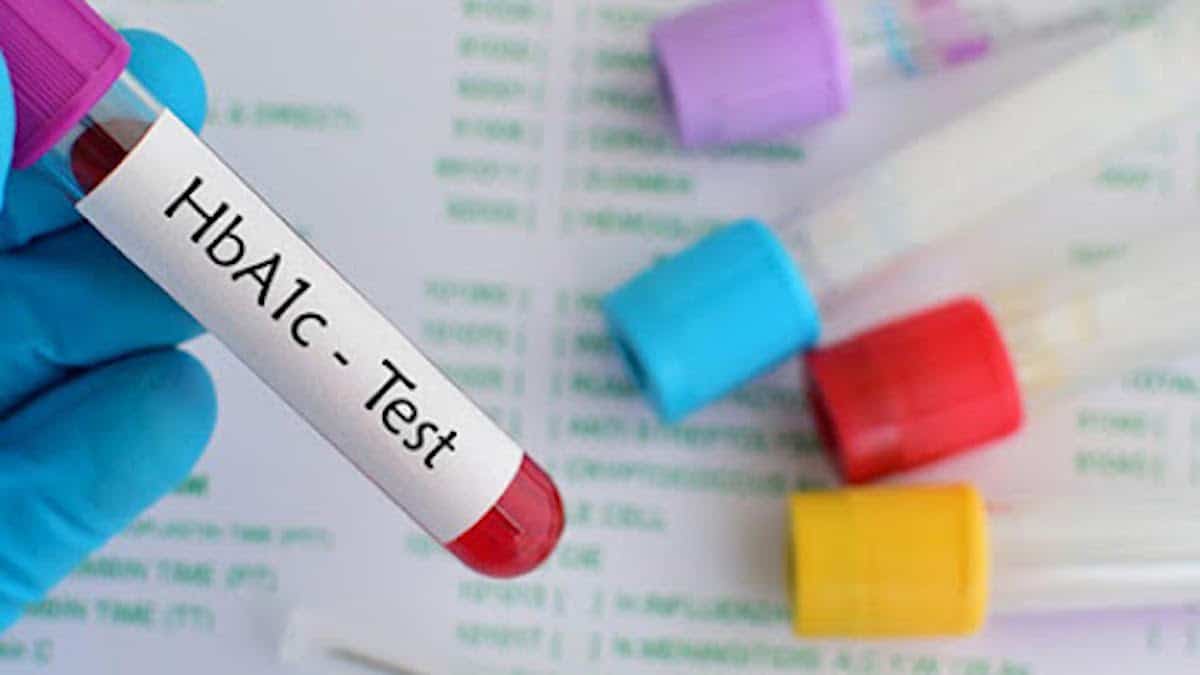Table of Contents
Haemoglobin A1c (HbA1c or A1c) is a critical marker that indicates average blood glucose levels over about three months. Vital for individuals with diabetes or pre-diabetes, A1c provides a long-term snapshot of blood sugar management. Maintaining stable A1c levels within an ideal range helps reduce diabetes-related complications and promotes overall wellness.
The speed at which Hemoglobin A1c (HbA1c) levels change is influenced by a wide array of factors, encapsulating genetics, age, gender, medical history, and lifestyle choices. These components contribute to an individual’s unique metabolic profile and response to blood glucose management strategies.
Genetics can predispose individuals to insulin sensitivity or resistance, which is crucial in determining how quickly one can modify their HbA1c levels. Age is another factor, with older adults often facing more challenges due to reduced metabolic efficiency and increased prevalence of comorbidities.
Gender can contribute to differences in body composition and hormone levels, impacting glucose metabolism. In addition, a person’s medical history, including prior diagnoses of diabetes or other metabolic disorders, can significantly influence their ability to reduce HbA1c levels.
Lifestyle choices are vital; dietary habits, physical activity levels, smoking, alcohol consumption, and stress management influence HbA1c levels. Overall, the pace at which an individual can modify their HbA1c levels is a complex interplay of these factors, underlining the importance of a comprehensive, individualized approach to blood glucose management.
Age:
- 20-30 years: A1c levels could start to reduce within 3-4 months, assuming a pre-diabetic state and appropriate lifestyle modifications and medication.
- 30-40 years: The A1c levels could reduce within 4-5 months with the same conditions.
- 40-50 years: In this age group, reducing A1c may take slightly longer, around 5-6 months.
- 50-60 years: For this group, with potential comorbidities and slower metabolic rates, it could take approximately 6-7 months to see a significant reduction in A1c levels.
- 60 and above: Due to slower metabolism, reduced physical activity, and increased likelihood of co-existing medical conditions, it might take 7-8 months or longer to see significant improvements.
Genetics:
The influence of genetic predispositions is challenging to quantify with a specific timeline since it involves complex biological interactions. However, generally, if there is a strong family history of diabetes, it could potentially take longer, perhaps an additional 1-2 months on the above estimates, to see significant improvements in A1c levels.
Medical History:
Prior medical history can significantly influence the timeline. For instance, individuals with a history of poor glycemic control or those with long-standing diabetes might take an additional 2-3 months on the above estimates to achieve significant A1c reductions.
Lifestyle:
Lifestyle choices, including diet, exercise, stress management, and sleep quality, can all significantly influence the timeline for A1c reduction.
- Healthy Lifestyle: With a balanced diet, regular exercise, good stress management, and quality sleep, the timelines stated above should apply.
- Unhealthy Lifestyle: If these elements are not in check, it could take 2-3 months to reduce A1c levels significantly.
Compliance with treatment:
Adherence to prescribed medication and lifestyle modifications is critical in managing A1c levels. Lack of compliance could significantly extend the timeline for reducing A1c levels by several months.
Weight:
Obesity or being overweight can significantly influence the body’s insulin sensitivity and, thus, blood glucose levels.
- Average Weight: If an individual is within a healthy weight range, the estimates given in the previous message should apply.
- Overweight: If the individual is heavy, it may take 1-2 months to see significant reductions in A1c levels.
- Obese: For those with obesity, achieving the same goals may require an additional 2-3 months or more, depending on the degree of obesity.
Presence of Other Health Conditions (Comorbidities):
Other health conditions like hypertension, heart disease, or other endocrine disorders can impact the timeline for reducing A1c levels.
- Without Comorbidities: If there are no comorbidities, the previously given estimates should apply.
- With Comorbidities: The presence of comorbidities can extend the timeline to see significant reductions in A1c levels by approximately 1-3 months or more, depending on the severity and management of the conditions.
Smoking Status:
Smoking has a detrimental effect on many aspects of health, including insulin sensitivity and glycemic control.
- Non-smokers: Non-smokers would fall within the previous estimates.
- Smokers: For smokers, it could take an additional 1-2 months to achieve similar reductions in A1c levels due to the negative impacts of smoking on insulin sensitivity and overall health.
Alcohol Consumption:
Regular and heavy alcohol consumption can impact blood glucose control and increase A1c levels.
- Non-Alcohol Consumers: If the individual does not consume alcohol, the previously given estimates should apply.
- Moderate Alcohol Consumers: For moderate drinkers, it may take an additional 1-2 months to see significant reductions in A1c levels.
- Heavy Alcohol Consumers: For heavy drinkers, it may take an additional 2-3 months or more to see significant reductions in A1c levels, particularly if they continue to drink heavily.
The thought process behind these hypothetical timelines is based on established medical and scientific understanding of the factors influencing blood glucose control, specifically haemoglobin A1c levels.
Measurement of A1c levels is done via a simple blood test, typically ordered by a healthcare professional. It is essential to understand that managing A1c levels involves a combination of medication, diet, exercise, and lifestyle modifications. Ideally, A1c levels should be less than 7% for most people, but the target can vary based on individual health factors. Regular monitoring and maintaining stable A1c levels are crucial to effective diabetes management and overall health.


